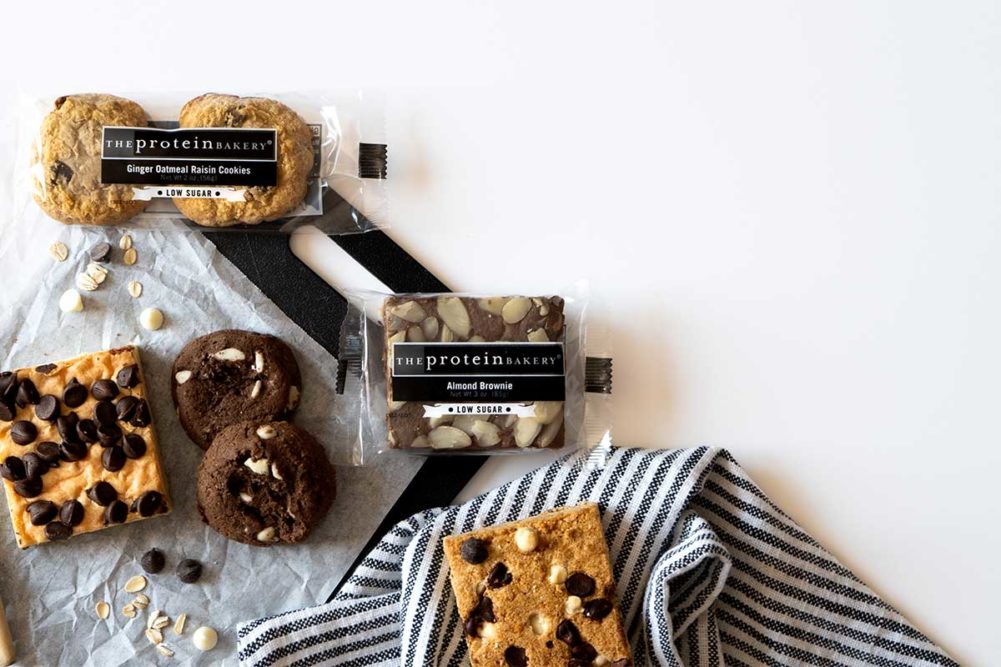When formulating baked goods with protein, managing water content is paramount because proteins bind water.
“There are several inherent challenges when trying to fortify baked goods with high levels of protein,” said Jason Demmerly, senior director, research and development, Glanbia Nutritionals. “Proteins compete for water, and this can affect dough hydration. It’s important to understand the varying degrees of moisture absorption of these ingredients compared to flour. There are also several limitations due to the interactions between proteins and starches in the system, which can lead to reduced viscosity and pasting properties as well as lower setback values.”
But these issues should not deter bakers from working with proteins. They do more than boost nutrition profiles. Further, some baked goods are more forgiving than others toward higher protein content. Soft-baked cookies, for example, have low-water content, making it easier to increase their protein and avoid negative ingredient interactions.
“When trying to counter absorption issues in a bakery product, we advise product developers to look at their entire formula,” said Aaron Reed, senior food technologist, Cargill. “The key is balancing high water-absorbing ingredients with plasticizing (low-absorbing) ingredients. For example, bakers may need to add more sugar and fat to offset the water absorption of the proteins or use more proteins that have plasticizing properties.”
Vital wheat gluten is also an important contributor when addressing absorption challenges.
“Vital wheat gluten is a superhero when it comes to baked goods, with strength, elasticity and binding properties among its many superpowers,” said Dave Lindhorst, technical services manager, Cargill. “It’s best known for its contributions to breads, where it aids in mixing, dough handling, loaf volume and finished product quality. But it can also help meet nutritional goals, with 75% protein on a dry-matter basis. Pea protein is another good candidate for bakery products. Paired with a complementary protein source such as rice, wheat gluten or soy, it’s easy to achieve a complete protein claim. Functionally, pea protein can also help with moisture retention.”
Wheat proteins work well when trying to balance both nutrition claims and product quality because of their functionality and clean taste profile, said Brook Carson, vice president, research and development, Manildra Group USA. The company’s wide range of wheat proteins can provide different functionalities depending on whether a bakery application needs elasticity, extensibility or solubility.
GemPro HPG, for example, yields 90% protein with a high degree of water absorption and viscoelastic properties that enable bakers to improve volume in weaker doughs. The GemPro Nova line contains 85% protein and is designed to replace eggs by delivering on the same aeration and emulsification capabilities in different bakery applications.
“Wheat proteins already have that natural wheat flavor while also being able to help bakers achieve the texture they want as they add protein to their formulations,” Ms. Carson explained.
Pea and wheat protein blends are trending in the plant protein-forward baked savory and sweet snacks space. By combining plant proteins, a more balanced amino acid profile is possible, which improves the overall protein quality of the snack and makes it more appealing.
“The protein blends can be used in tandem with texture and functional solutions, including clean-tasting soy crisps made from soy protein isolate, to help create delicious protein-forward baked goods and snacks,” said Jeff Hodges, manager, bakery, snacks and confections applications, ADM. “Pea proteins have overall low total aromatics, including less beany, earthy and bitter notes. They also can support clean label targets as they are inherently non-GMO.”
This article is an excerpt from the August 2023 issue of Baking & Snack. To read the entire feature on Protein, click here.





